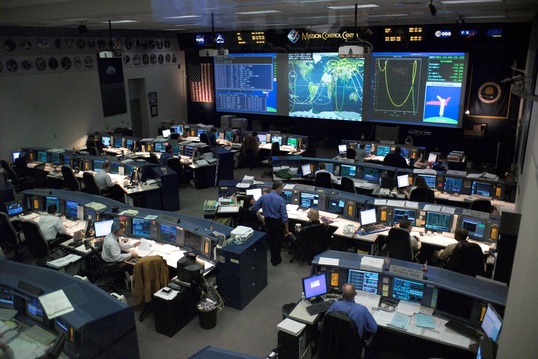
Sample Program Schedule
Below is a sample schedule I recommend for the program. Please let me know what you think and keep in mind that the times can be adjusted to the needs of your students.
8:05 am to 9:35 am
Astronomy for Everyone: Size & Scale of the Universe is an exciting program about the universe from the very small to the very large that lasts approximately 1 ½ hours. I use an MS PowerPoint slide presentation format with a laptop PC, so a digital projector and screen are needed. I also incorporate some video footage.
Break-out sessions with hands-on activities
9:35 am to 10:15 am
Survival on the Moon: After crash-landing on the Moon, students are asked to prioritize a list of 15 items that survived the crash according to their level of importance to survive the long journey back to the base ship. Then they are placed in groups to discuss and form a consensus for their group giving reasons for their choices. Finally, a list with reasons given by NASA astronauts is revealed.
10:15 am to 11:45 am
Roadmap to the Stars: The Night Sky Explained - When you wish upon a star, wouldn't it be good to know which star it is and what constellation it lies in? Objects in the night sky can be pinpointed with a little understanding of the celestial sphere and its coordinates. Hands-on activities using star charts will serve to bring the point home.
11:45 am to 12:15 pm
Messier Object Search: An introduction to Charles Messier as the famous comet hunter and a primer on celestial coordinates of the night sky. Students are given professional level star charts and a list of Messier Objects (galaxies, nebulae and star clusters) to locate using their coordinates. Photos of these objects are shown and discussed as to what they are and how they were formed.
12:15 pm to 12:45 pm
Lunch
12:50 pm to 1:50 pm
We all go outdoors to view sunspots on the sun using a solar filter (same one NASA uses), weather permitting. If clouds keep us from viewing the sun, then the program When Celestial Bodies Collide: Eclipses & Other Phenomena shall be given.
2:00 pm to 3:15 pm
Capture the Colorful Cosmos with NASA’s MicroObservatory: Using computers online, students will learn how to access robotic telescopes, take photographs of planets, galaxies, and nebulae and use image processing tools to bring out detail in these photos the same way that professional astronomers do. Inspire your students to take and manipulate their own astronomical photographs and create original displays and exhibits. Have students construct a “Cosmic Quilt” for display at your school.
Below is a sample schedule I recommend for the program. Please let me know what you think and keep in mind that the times can be adjusted to the needs of your students.
8:05 am to 9:35 am
Astronomy for Everyone: Size & Scale of the Universe is an exciting program about the universe from the very small to the very large that lasts approximately 1 ½ hours. I use an MS PowerPoint slide presentation format with a laptop PC, so a digital projector and screen are needed. I also incorporate some video footage.
Break-out sessions with hands-on activities
9:35 am to 10:15 am
Survival on the Moon: After crash-landing on the Moon, students are asked to prioritize a list of 15 items that survived the crash according to their level of importance to survive the long journey back to the base ship. Then they are placed in groups to discuss and form a consensus for their group giving reasons for their choices. Finally, a list with reasons given by NASA astronauts is revealed.
10:15 am to 11:45 am
Roadmap to the Stars: The Night Sky Explained - When you wish upon a star, wouldn't it be good to know which star it is and what constellation it lies in? Objects in the night sky can be pinpointed with a little understanding of the celestial sphere and its coordinates. Hands-on activities using star charts will serve to bring the point home.
11:45 am to 12:15 pm
Messier Object Search: An introduction to Charles Messier as the famous comet hunter and a primer on celestial coordinates of the night sky. Students are given professional level star charts and a list of Messier Objects (galaxies, nebulae and star clusters) to locate using their coordinates. Photos of these objects are shown and discussed as to what they are and how they were formed.
12:15 pm to 12:45 pm
Lunch
12:50 pm to 1:50 pm
We all go outdoors to view sunspots on the sun using a solar filter (same one NASA uses), weather permitting. If clouds keep us from viewing the sun, then the program When Celestial Bodies Collide: Eclipses & Other Phenomena shall be given.
2:00 pm to 3:15 pm
Capture the Colorful Cosmos with NASA’s MicroObservatory: Using computers online, students will learn how to access robotic telescopes, take photographs of planets, galaxies, and nebulae and use image processing tools to bring out detail in these photos the same way that professional astronomers do. Inspire your students to take and manipulate their own astronomical photographs and create original displays and exhibits. Have students construct a “Cosmic Quilt” for display at your school.
